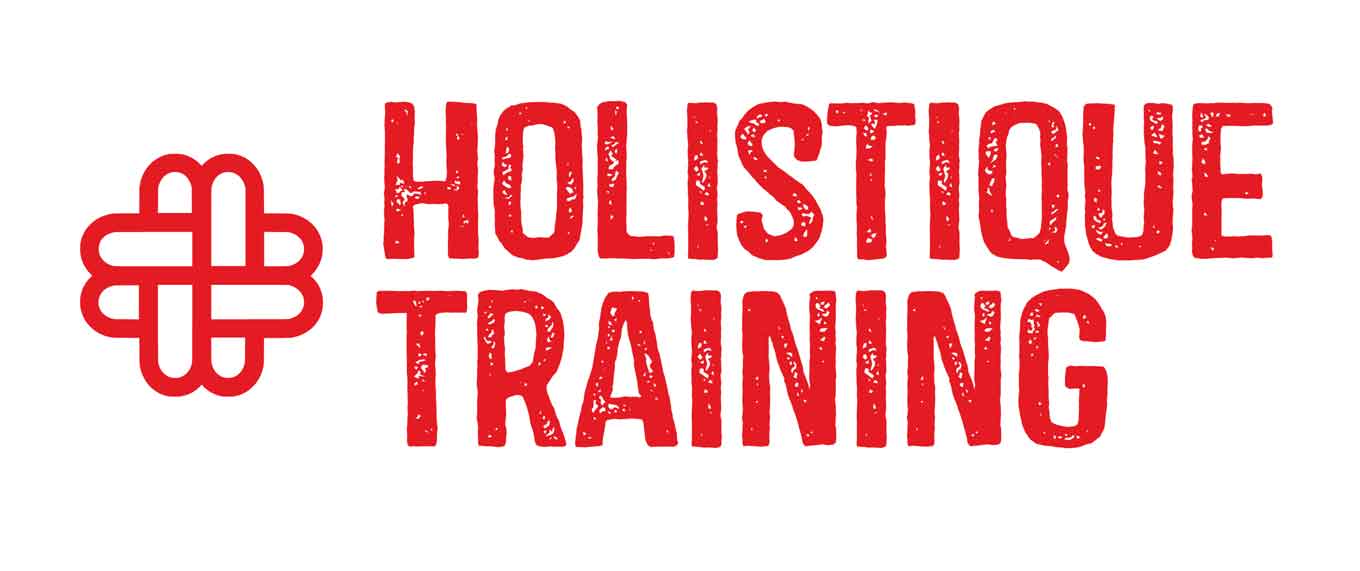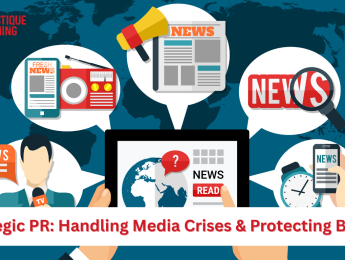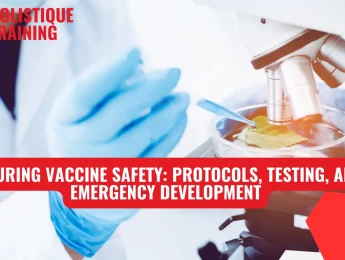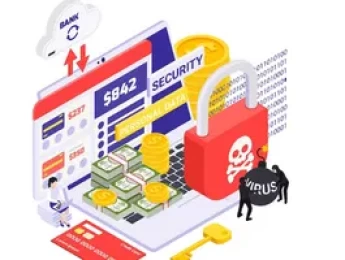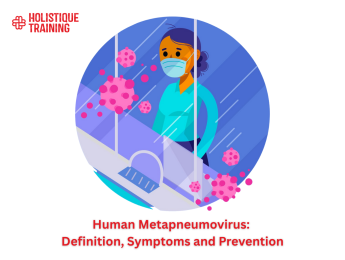- Table of Contents
- Introduction
- Common Crises That Threaten a Brand’s Reputation
- 1. Product Failures & Recalls
- 2. Data Breaches & Cybersecurity Issues
- 3. PR & Social Media Controversies
- 4. Executive Scandals & Misconduct
- 5. Financial & Business Crises
- 6. Workplace Issues & Employee Conflicts
- 7. Environmental & Ethical Concerns
- 8. Legal & Regulatory Violations
- Crisis Communication Strategies for Brands
- 1. Immediate Response
- 2. Transparency
- 3. Consistent Messaging
- 4. Social Media Monitoring
- Handling Media Backlash Effectively
- Strategies for Managing Media Backlash
- Public Relations Crisis Response Tactics
- 1. Establishing a Crisis Response Team
- 2. Implementing Transparent Communication
- 3. Utilizing Social Media for Crisis Management
- 4. Engaging with Media Outlets
- 5. Developing a Crisis Communication Plan
- 6. Rebuilding Brand Trust Post-Crisis
- Rebuilding Brand Trust After a PR Crisis
- 1. Acknowledge and Take Responsibility
- 2. Communicate Transparently and Consistently
- 3. Implement Meaningful Changes
- 4. Rebuild Relationships with Customers
- 5. Strengthen Internal Culture
- 6. Leverage Positive Public Relations
- Managing Public Perception in a Media Crisis
- 1. Proactive Communication
- 2. Leveraging Influencers and Brand Advocates
- 3. Using Storytelling Techniques
- 4. Monitoring Media Coverage
- Social Media Damage Control Strategies
- 1. Responding Promptly to Negative Comments
- 2. Using Crisis-Specific Hashtags
- 3. Engaging with Followers
- 4. Collaborating with PR Experts
- 5. Monitoring Sentiment Analysis
- Corporate Reputation Management Best Practices
- The Importance of a Well-Structured Crisis Communication Plan
- Conclusion
Introduction
In today’s interconnected world, a brand’s reputation can be shaped—or shattered—within moments. Public relations (PR) professionals must be prepared to handle crises swiftly and strategically to protect their organization’s credibility. Whether it’s a social media controversy, a corporate scandal, or misinformation spreading online, effective crisis communication ensures that businesses can mitigate damage and rebuild trust.
A well-executed crisis communication plan involves transparency, rapid response, and strategic messaging. Organizations that fail to address crises effectively risk long-term reputational harm, financial losses, and diminished consumer trust. This article explores essential crisis communication strategies, media backlash management, and reputation control techniques to help businesses navigate turbulent situations.
Common Crises That Threaten a Brand’s Reputation
Brands can face various types of crises that threaten their reputation, financial stability, and customer trust. Here are some common crises that businesses may encounter:
1. Product Failures & Recalls
When a product is defective or poses safety risks, companies may need to issue recalls. Poor handling of such situations can lead to consumer distrust and financial losses.
2. Data Breaches & Cybersecurity Issues
Unauthorized access to customer data can severely damage a brand’s credibility. Companies that fail to protect sensitive information risk legal consequences and loss of customer confidence.
3. PR & Social Media Controversies
A single misstep—such as an insensitive advertisement or a viral negative review—can escalate into a full-blown crisis. Brands must monitor online discussions and respond strategically.
4. Executive Scandals & Misconduct
Leadership scandals, unethical behavior, or legal troubles involving executives can tarnish a company’s reputation. Swift action and transparent communication are crucial in damage control.
5. Financial & Business Crises
Bankruptcy, fraud, or financial mismanagement can lead to loss of investor trust and market instability. Companies must have contingency plans to navigate financial downturns.
6. Workplace Issues & Employee Conflicts
Discrimination, harassment, or poor working conditions can result in negative media coverage and employee dissatisfaction. Addressing workplace concerns proactively helps maintain a positive brand image.
7. Environmental & Ethical Concerns
Brands that fail to meet sustainability standards or engage in unethical practices may face boycotts and public backlash. Consumers increasingly expect companies to uphold ethical values.
8. Legal & Regulatory Violations
Non-compliance with industry regulations can lead to lawsuits, fines, and reputational damage. Businesses must ensure they follow legal guidelines to avoid such crises.
Crisis Communication Strategies for Brands
Effective crisis communication is essential for brands facing unexpected challenges. According to research, over 60% of businesses experience a PR crisis at least once every five years. The key to managing such crises lies in transparency, swift response, and consistent messaging:
1. Immediate Response
When a crisis emerges, the first few hours are critical. Organizations must acknowledge the situation promptly to prevent speculation and misinformation. A delayed response can lead to public distrust and media escalation. The key is to gather accurate information, assess the severity of the crisis, and issue an initial statement that reassures stakeholders while promising further updates.
2. Transparency
Honesty is the foundation of crisis management. Attempting to hide or downplay issues can backfire, leading to greater scrutiny and loss of credibility. Transparent communication involves admitting mistakes, providing factual details, and outlining corrective actions. Consumers and stakeholders appreciate brands that take responsibility rather than deflect blame.
3. Consistent Messaging
During a crisis, conflicting statements can worsen the situation. Organizations must ensure that all spokespersons, executives, and employees communicate a unified message. This prevents confusion and reinforces credibility. A well-prepared crisis communication team should align their responses across press releases, interviews, and social media updates.
4. Social Media Monitoring
Social media can amplify crises, making it essential to track online conversations. Organizations should use sentiment analysis tools to gauge public perception and identify misinformation. Engaging with users, responding to concerns, and correcting false narratives can help control the crisis before it escalates.
Handling Media Backlash Effectively
Media backlash occurs when negative press coverage, viral social media posts, or public criticism damage a brand’s reputation. This can stem from controversial statements, unethical business practices, product failures, or scandals. If not managed properly, media backlash can lead to boycotts, declining sales, and long-term reputational harm.
To mitigate media backlash, organizations must acknowledge the issue publicly, engage with media outlets, leverage social media, and monitor sentiment analysis.
Strategies for Managing Media Backlash
1. Acknowledge the Issue Publicly
Ignoring a crisis or issuing vague statements can worsen public perception. Instead, organizations should address the issue head-on by releasing a clear and concise statement. This can be done through press releases, official social media posts, or interviews with trusted media outlets. The statement should include:
- Acknowledgment of the situation.
- An explanation of the corrective measures being taken.
- A commitment to transparency and accountability.
2. Engage with Media Outlets
Media plays a crucial role in shaping public perception. Organizations should proactively communicate with journalists and news platforms to ensure accurate reporting. This involves:
- Providing official statements to clarify misinformation.
- Offering exclusive interviews to trusted journalists.
- Hosting press conferences to address concerns directly.
3. Leverage Social Media
Social media provides brands with the ability to shape their narrative and engage directly with their audience, making it a powerful tool during a crisis. To effectively manage public perception, brands should respond to comments and concerns in a professional and timely manner, ensuring transparency and building trust. Utilizing crisis-specific hashtags can help centralize discussions and guide audiences toward official statements, minimizing misinformation. Additionally, sharing corrective actions through visually engaging formats such as video messages or infographics can reinforce accountability and demonstrate proactive efforts. Collaborating with influencers who align with the brand’s values can further strengthen credibility, as their advocacy helps reassure the public and shift sentiment in a positive direction. Through these strategies, brands can maintain control over their image and navigate crises effectively.
4. Monitor Sentiment Analysis
Understanding public sentiment is a vital component of effective crisis communication, as it allows organizations to refine their messaging and respond strategically. AI-driven sentiment analysis tools can help businesses track trending discussions related to the crisis, ensuring they stay ahead of public concerns and narratives. Monitoring public reactions to official statements is equally important, as it provides insight into how messages are being received and whether adjustments are needed. Additionally, identifying and addressing potential misinformation prevents the spread of false narratives that could further damage a brand’s reputation. By continuously analyzing sentiment, organizations can adapt their communication approach, respond to concerns in a timely manner, and work toward rebuilding trust with their audience.
Public Relations Crisis Response Tactics
A well-structured crisis response plan ensures that organizations can react effectively. Below you'll find essential key tactics for managing reputational risks and mitigating damage when an organization faces a crisis:
1. Establishing a Crisis Response Team
A dedicated crisis response team ensures that an organization can react swiftly and effectively. Research by ACADEMIA indicates that companies with a pre-established crisis team recover 40% faster than those without one. This team should include:
- Spokespersons trained in crisis communication.
- Legal advisors to ensure compliance with regulations.
- Social media managers to monitor online discussions.
- Public relations professionals to craft strategic messaging.
2. Implementing Transparent Communication
Transparency is a fundamental element of crisis management, as it helps organizations maintain credibility and reassure stakeholders. When facing a crisis, brands should openly acknowledge the issue rather than deflecting blame, demonstrating accountability and a commitment to resolving the situation. Providing factual updates ensures that misinformation is minimized, allowing the public to stay informed with accurate details. Engaging with stakeholders, including customers, employees, and partners, fosters trust and strengthens relationships, showing that the organization values openness and responsiveness. By prioritizing transparent communication, businesses can navigate crises more effectively and work toward rebuilding their reputation.
3. Utilizing Social Media for Crisis Management
Social media plays a crucial role in crisis response, as it serves as a direct channel for communication and public engagement. When a crisis unfolds, brands must actively monitor sentiment analysis to understand public perception and identify potential risks. This allows them to adjust their messaging and address concerns before misinformation spreads. Responding promptly to negative comments and emerging issues demonstrates accountability and helps maintain trust with stakeholders. Additionally, using crisis-specific hashtags can centralize discussions, making it easier for audiences to access official statements and accurate information. By leveraging social media effectively, brands can control their narrative, mitigate reputational damage, and restore confidence among their audience.
4. Engaging with Media Outlets
Media coverage plays a significant role in shaping public perception during a crisis, making it essential for organizations to engage proactively with journalists and news outlets. Issuing press releases with clear and concise messaging ensures that the company’s stance on the crisis is accurately represented, preventing speculation and misinformation. Providing exclusive interviews to trusted media sources allows businesses to clarify their position, offer context, and reinforce transparency in their response. Additionally, hosting press conferences gives organizations the opportunity to address concerns directly, respond to questions from the media, and demonstrate accountability. By taking control of the narrative and maintaining open communication with the press, brands can effectively manage reputational risks and restore public trust.
5. Developing a Crisis Communication Plan
A structured crisis communication plan ensures preparedness. Research shows that businesses with a crisis plan reduce financial losses by 25% during crises. Essential components include:
- Pre-approved statements to ensure consistency.
- Defined communication channels for official updates.
- Post-crisis evaluation to improve future responses.
6. Rebuilding Brand Trust Post-Crisis
Restoring trust after a crisis requires a well-planned and strategic approach. Brands must take responsibility for the situation by acknowledging their mistakes and demonstrating accountability. Issuing a sincere public apology can help reassure stakeholders that the company recognizes the issue and is committed to resolving it. However, words alone are not enough—implementing corrective measures is essential to prevent similar incidents in the future and show a commitment to improvement. Additionally, showcasing positive brand initiatives through media campaigns can help rebuild credibility and highlight the company’s efforts to create meaningful change. By taking these steps, businesses can gradually restore public confidence and strengthen relationships with their customers.
Rebuilding Brand Trust After a PR Crisis
Restoring trust after a crisis requires strategic efforts. Studies indicate that 80% of consumers are willing to forgive brands that take responsibility and implement corrective actions. Steps to rebuild trust include:
1. Acknowledge and Take Responsibility
One of the first steps in rebuilding trust is admitting mistakes. Brands must issue a sincere public apology that acknowledges the situation, provides an explanation, and outlines corrective actions. A well-crafted apology should be clear, honest, and accompanied by a commitment to improving practices.
2. Communicate Transparently and Consistently
Transparency is key to regaining public confidence. Organizations should provide regular updates on the actions taken to address concerns, ensuring that all communication remains consistent across different platforms. This helps prevent confusion and reinforces credibility.
3. Implement Meaningful Changes
Apologies alone are not enough—customers and stakeholders expect to see tangible improvements. Brands should identify the root causes of the crisis and make necessary adjustments to policies, business operations, or leadership approaches. Demonstrating long-term commitment to ethical practices strengthens credibility.
4. Rebuild Relationships with Customers
Direct engagement with customers helps restore trust. Brands can address concerns through open dialogue, offer solutions, and create feedback channels. Positive interactions, loyalty programs, and personalized outreach efforts contribute to stronger relationships.
5. Strengthen Internal Culture
Employees are key players in reputation management. Organizations must train staff on crisis communication, ethical behavior, and corporate responsibility to ensure alignment with brand values. Encouraging open communication internally also fosters a positive work environment.
6. Leverage Positive Public Relations
Public relations can help reshape brand perception. Companies should share success stories, encourage positive customer testimonials, and highlight social responsibility efforts. Collaborations with trusted partners or influencers also reinforce brand credibility.
Managing Public Perception in a Media Crisis
Public perception is one of the most influential factors in a brand’s ability to navigate a crisis. How a company responds to challenges, communicates with its audience, and addresses concerns can significantly impact its reputation. By implementing effective strategies, businesses can maintain credibility, reassure stakeholders, and mitigate long-term damage to their image. Strategies for managing perception include:
1. Proactive Communication
One of the most effective ways to manage public perception is through proactive communication. Brands should address the issue before misinformation spreads, ensuring that they remain in control of the narrative. This starts with issuing an official statement that acknowledges the situation and provides clarity on the company’s position. Clear and factual updates are essential to prevent speculation and reassure stakeholders that the organization is handling the matter responsibly. Additionally, direct engagement with stakeholders—whether customers, employees, or partners—demonstrates accountability and commitment to corrective action, fostering trust and reinforcing the brand’s credibility. By taking these steps, businesses can shape public perception in a way that mitigates damage and promotes transparency. Studies show that brands that respond within the first 24 hours of a crisis reduce negative sentiment by 30%.
2. Leveraging Influencers and Brand Advocates
Influencers and brand advocates can help reinforce credibility during a crisis. Organizations should:
- Collaborate with trusted influencers to share accurate information.
- Encourage loyal customers to support the brand publicly.
- Use testimonials and case studies to highlight positive brand initiatives.
3. Using Storytelling Techniques
Storytelling is a powerful way to humanize a brand’s response and build emotional connections with the audience during a crisis. Instead of relying on generic statements, organizations can share personal stories from employees or customers to showcase the brand’s values and commitment to improvement. Video messages are particularly effective in conveying sincerity and authenticity, allowing key representatives to speak directly to stakeholders in a relatable and transparent manner. Additionally, highlighting corrective actions through engaging narratives.
4. Monitoring Media Coverage
Tracking media coverage is essential for brands to refine their communication strategy and ensure their messaging aligns with public perception. By using media monitoring tools, organizations can analyze sentiment, identify trends, and assess how their crisis response is being received. Engaging with journalists allows businesses to clarify misinformation and ensure accurate reporting, which helps prevent speculation and further reputational harm. Additionally, issuing follow-up statements reinforces positive messaging and keeps stakeholders informed about corrective actions and improvements. By actively monitoring media coverage and adjusting their approach, brands can maintain control of their narrative and effectively navigate crises.
Social Media Damage Control Strategies
Social media is a powerful tool that can shape public perception during a crisis, making it essential for brands to manage their online presence effectively. If left unaddressed, negative trends can quickly escalate and harm a company’s reputation. To mitigate potential damage, businesses must implement strategic responses that allow them to control the narrative, address concerns, and rebuild trust with their audience. Effective damage control strategies include:
1. Responding Promptly to Negative Comments
Social media crises can escalate quickly if left unaddressed. Brands should:
- Respond professionally to negative comments.
- Acknowledge concerns and provide solutions.
- Avoid defensive or dismissive responses that may worsen the situation.
2. Using Crisis-Specific Hashtags
Creating a crisis-specific hashtag helps centralize discussions and control the narrative. For example:
- #BrandTransparency can be used to share updates.
- #CustomerSupport can direct users to official responses.
3. Engaging with Followers
Active engagement is key to maintaining transparency during a crisis, as it allows brands to directly connect with their audience and build trust. Hosting live Q&A sessions provides an opportunity to address concerns in real time, demonstrating openness and a willingness to engage with stakeholders. Encouraging constructive discussions, rather than deleting negative comments, shows that the brand is receptive to feedback and committed to resolving issues. Additionally, sharing behind-the-scenes updates offers insights into the company’s corrective actions, reinforcing accountability and authenticity. By actively engaging with their audience, brands can foster positive relationships and effectively manage their reputation during challenging times.
4. Collaborating with PR Experts
Public relations experts play a vital role in helping brands navigate crises with well-crafted, strategic responses. Consulting crisis communication specialists provides valuable insights and professional guidance, ensuring that the organization’s messaging aligns with best practices. Developing pre-approved statements is essential for maintaining consistency across all communication channels, preventing conflicting or unclear messaging that could further escalate the situation. Additionally, training employees on social media crisis management equips teams with the necessary skills to handle online discussions, respond effectively to concerns, and prevent misinformation from spreading. By leveraging PR expertise, brands can strengthen their response strategy and protect their reputation during challenging times.
5. Monitoring Sentiment Analysis
Using AI-driven sentiment analysis tools allows brands to:
- Track trending discussions related to the crisis.
- Identify misinformation that needs correction.
- Adjust messaging based on public reactions.
Research highlights that brands that actively monitor sentiment analysis recover 40% faster from crises.
Corporate Reputation Management Best Practices
Maintaining a strong corporate reputation requires ongoing efforts. Best practices include:
| Best Practice | Description |
Transparency & Honesty | Open communication builds trust with stakeholders. Companies should be clear about their policies, decisions, and challenges. |
Consistent Brand Messaging | Ensure that all communication—internal and external—aligns with the company’s values and mission. |
Proactive Media Engagement | Establish relationships with journalists and media outlets to ensure accurate reporting and positive coverage. |
Social Responsibility Initiatives | Engage in corporate social responsibility (CSR) programs to demonstrate commitment to ethical practices. |
Employee Advocacy | Employees are brand ambassadors. Encouraging a positive workplace culture enhances reputation. |
Crisis Preparedness | Develop a crisis communication plan to handle unexpected situations effectively. |
Customer Engagement & Feedback | Actively listen to customer concerns and address them promptly to maintain loyalty. |
Online Reputation Monitoring | Use digital tools to track brand sentiment and respond to negative feedback strategically. |
The Importance of a Well-Structured Crisis Communication Plan
A well-structured crisis communication plan is the cornerstone of effective damage control, helping organizations respond swiftly, minimize reputational harm, and rebuild trust with their stakeholders. Without a clear framework in place, businesses risk delays in response, inconsistent messaging, and further escalations that could deepen the crisis.
This table outlines the essential components of a strategic crisis communication plan, ensuring that companies remain prepared to navigate uncertainty and safeguard their reputation in the face of challenges. Below is a suggested framework that provides a step-by-step approach to handling crises effectively.
Phase | Action Steps |
Preparation | Identify potential risks and vulnerabilities - Establish a crisis response team with designated roles - Develop pre-approved messaging templates. |
Immediate Response | Issue an initial statement acknowledging the situation - Communicate transparently with stakeholders - Monitor media coverage and social media discussions. |
Damage Control | Engage with media outlets to clarify misinformation - Address customer concerns through direct communication - Implement corrective actions to mitigate reputational harm. |
Recovery & Reputation Rebuilding | Evaluate lessons learned from the crisis - Strengthen internal policies to prevent future issues - Launch positive PR campaigns to restore brand trust. |
Conclusion
Public relations and crisis communication are indispensable for safeguarding and strengthening a brand’s reputation, especially in today’s fast-paced, interconnected world. When a crisis strikes, a well-prepared and strategic communication plan can make the difference between irreversible damage and a successful recovery. By proactively implementing thoughtful tactics—such as timely messaging, transparency, stakeholder engagement, and consistent media relations—businesses not only manage crises more effectively but also demonstrate resilience, rebuild trust with their audiences, and even emerge stronger than before.
Staying informed and prepared is key. To keep up with the latest trends, proven strategies, and real-world case studies in public relations and crisis management, subscribe to our newsletter and enroll in our expertly designed courses. Gain practical insights, actionable tools, and confidence to handle any media or reputational challenge with professionalism and impact!
